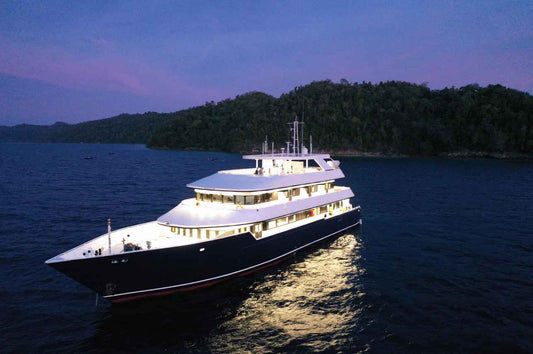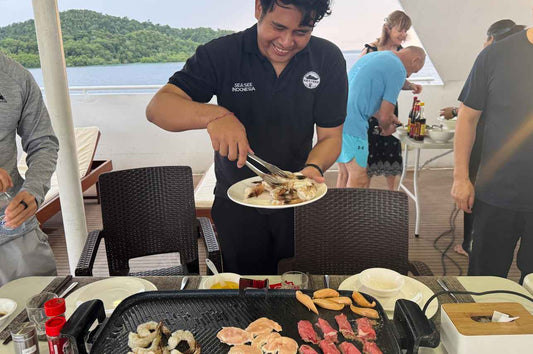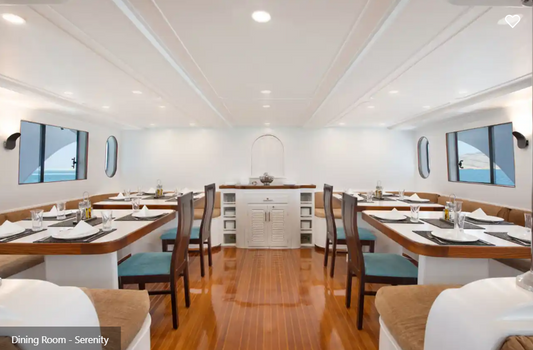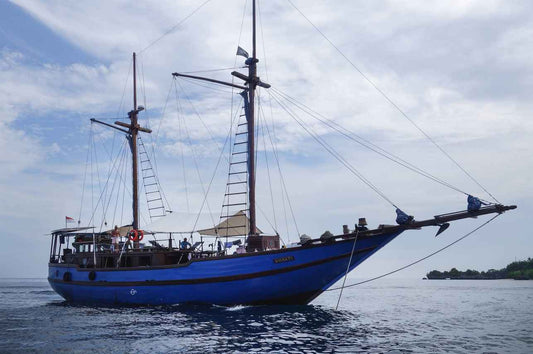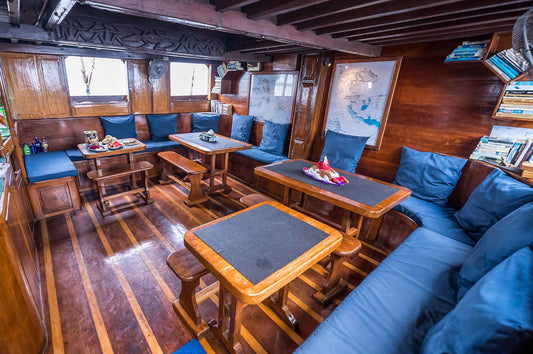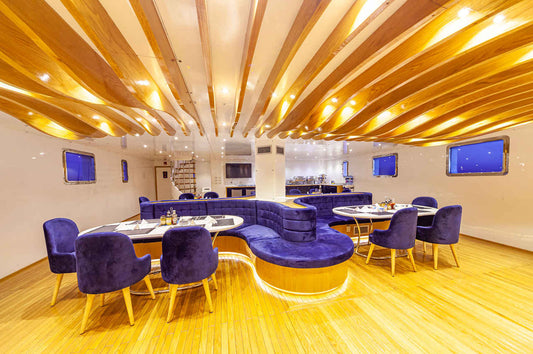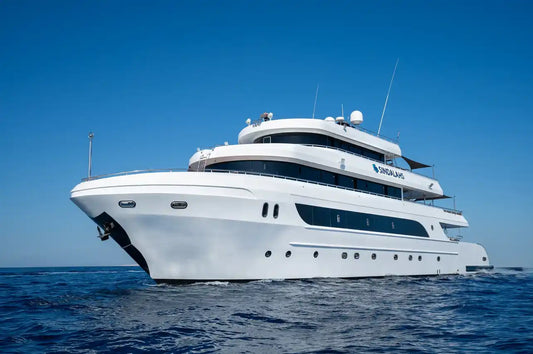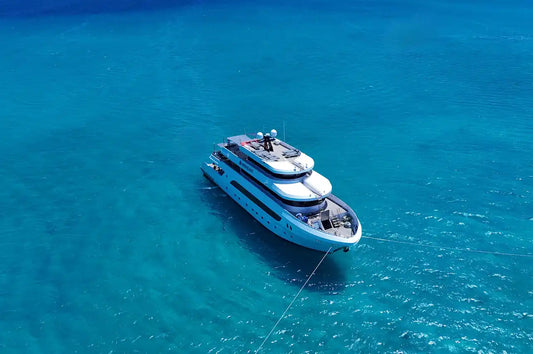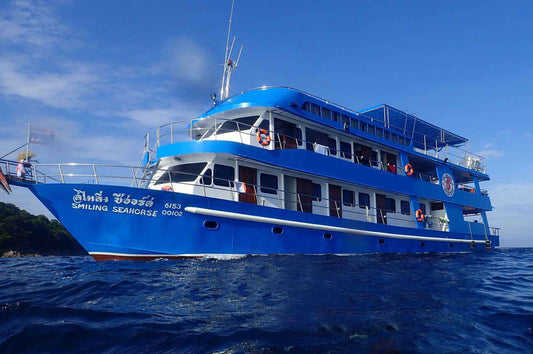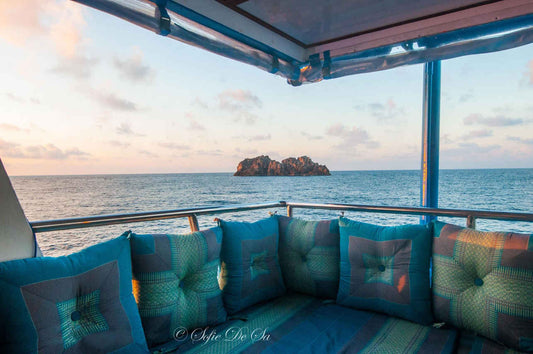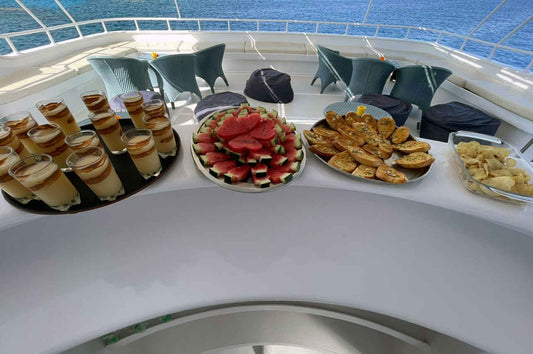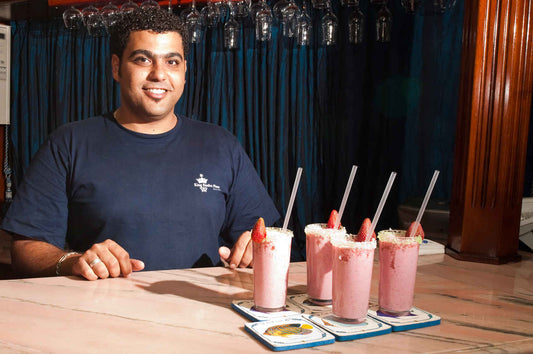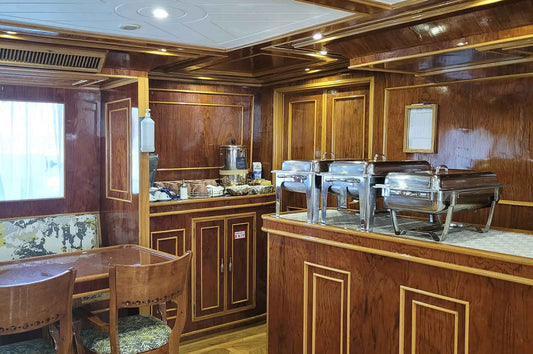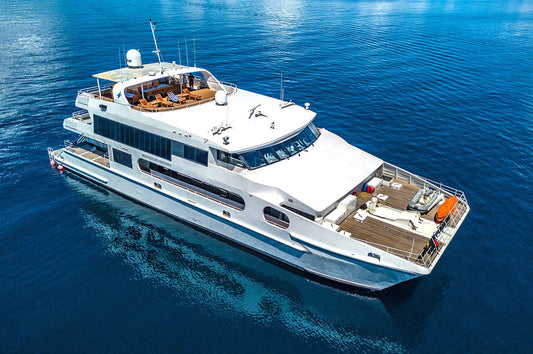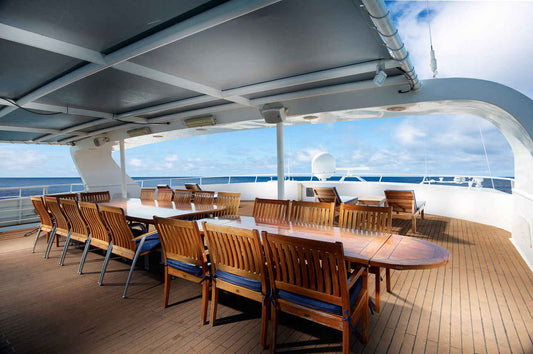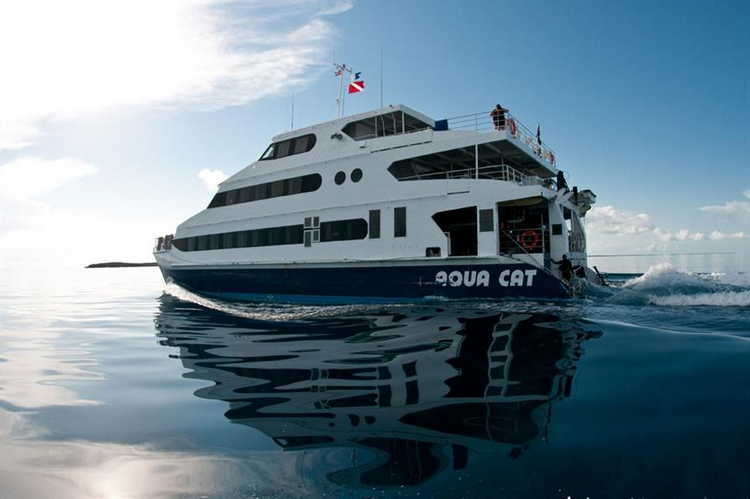
Dive Liveaboards With Sidemount Diving Support Onboard
Compare and book your favourite dive liveaboard with sidemount diving support onboard
Dive Liveaboards With Sidemount Diving Onboard
As you'll be aware, scuba diving with a sidemount setup simply means that you carry your dive tanks at your sides, instead of on your back. Which means if you book one of these sidemouint-diver-friendly liveaboards, the liveaboard crew will understand how sidemount diving works.
Also, sidemount diving can reduce drag and is more comfortable for many divers, where the tanks can be attached once you're in the water, which makes carrying tanks and kitting up easier, especially if you have difficulty lifting or walking with a backmounted tank.
So when you're diving up to 3-4 times a day, sidemount diving will make your life easier. Technical divers normally carry extra cylinders, which means that using a sidemount setup is the best option, as carrying a twinset of tanks on your back is very heavy.
If you have other preferences to add to these dive liveaboards with sidemount support, use the filter section to narrow your search to find your perfect dive liveaboard.
Note: The above “Price Per Day” was correct at the time of producing this article, as was the exchange rate used to convert the GBP cost to US Dollars and Euros. For an up-to-date cost for your chosen liveaboard, please visit the booking page.
Liveaboard Discounted Deals
Once you've found your perfect dive liveaboard, you might want to use this table of discounted liveaboard deals and last minute deals to find a great deal.
Dive Liveaboards With Sidemount Diving Onboard
Why pick a liveaboard that supports sidemount diving?
If you like to sidemount dive with your scuba tanks at your sides, and you want to dive on a liveaboard using this method, you may want to choose one of these liveaboards that offer sidemount diving support.
Sidemount diving feels light, balanced, and very free in the water, and on a dive liveaboard you get many dives to enjoy that comfort.
You also have time to fine tune your trim, and to easily clip and unclip your tanks in the water, allowing you to reduce the amount of weight with which you enter and exit the water.
What does “sidemount friendly” mean on a dive liveaboard?
It means the crew knows how to handle up to two cylinders for each diver, there is space on deck to clip in safely, and tenders have a simple routine for passing cylinders in and out of the water.
However, some of these liveaboards only offer sidemount diving with a single cylinder. Being on a dive liveaboard that supports sidemount diving also means the racks, straps, and storage keep your kit tidy between dives so you are never rushing.
Do I need a sidemount certification?
Yes, bring your certification card. Boats will ask for proof so they can plan safe gas rules and briefings. If you are new to sidemount diving, choose calm routes first, then add trickier sites once you feel settled.
Some dive boats offer scuba courses on board, so ask when you book, as Padi offer a Tec Sidemount Diver course course to dive with sidemount tanks, and many dive liveaboards offer Paid training. Which trips work best for sidemount diving?
Reef routes with gentle walls, wreck weeks with roomy swim throughs, and destinations with easy tender drops are all great. Warm water helps with comfort and makes long, steady dives more fun.
If you want tight wreck penetrations or caves, book specialist trips with guides who run strict safety plans.
What should you ask before you book?
Check how many sidemount dive tanks the liveaboard supports, twin or single cylinders? Ask how many sidemount divers the boat can support at once, which cylinder sizes are available, and whether left and right stage rigs are ready.
Check if nitrox is offered for both cylinders and if analysis gear is on hand. Confirm tender procedures, ladder style, and how reboarding works with clipped cylinders.
How is cylinder set up handled on a dive liveaboard?
Most crews set your pair at a waist height bench so you can clip in cleanly. Before each dive you analyse, label both cylinders, and agree your starting pressures with your dive buddy.
On the tender the crew passes one cylinder at a time, you clip, check bungees and hoses, then roll in with a calm signal to the skipper, or even roll into the water first and have the crew pass the dive tanks to you in the water.
How do gases and nitrox work with sidemount?
Treat both cylinders the same mix unless you are on a specialist course. Analyse both, label both, and set your computer. Use a simple gas rotation so pressures remain close.
Free nitrox is a nice perk on dive liveaboards where you can dive 3-4 times a day, because it gives longer no stop times at the same depth and you'll be less tired at the end of each day.
What should you pack for a dive liveaboard to sidemount dive?
Bring your harness with bungees you trust, two first stages with proper hose lengths, two pressure gauges, two bolt snap sets, spare O rings, spare bungee, and a few cable ties.
Add a low profile SMB and a compact reel. A small mat or towel by your station helps keep clips and hoses sand free.
How do you keep buddies and crew happy on a liveaboard?
Be tidy at your deck spot, keep cylinders in the marked place, and be ready five minutes before the tender leaves. Share your plan with your buddy, including gas checks and tank pressure.
A calm, predictable routine makes sidemount easy for everyone.
Quick checklist before you pay for your dive liveaboard
- Boat confirms support for sidemount pairs or single tanks if you are happy with a single sidemounted tank.
- Right cylinder sizes and valves available.
- Nitrox for both cylinders if you want it, as some dive liveaboards offer free nitrox onboard too.
- Space on deck for clipping and checks.
- Your certification and kit list ready.
Final tip for booking a dive liveaboard with sidemount diving support
Pick one of these dive liveaboards that will have a sidemount aware crew, bring a neat kit, and keep your routine simple.
With three-four relaxed dives a day you will enjoy the balance, the control, and the extra comfort that sidemount brings, all while seeing more of the reef with less effort.
-
Example product title
Vendor:VendorRegular price £19.99 GBPRegular priceUnit price / per -
Example product title
Vendor:VendorRegular price £19.99 GBPRegular priceUnit price / per -
Example product title
Vendor:VendorRegular price £19.99 GBPRegular priceUnit price / per -
Example product title
Vendor:VendorRegular price £19.99 GBPRegular priceUnit price / per
-
Example product title
Vendor:VendorRegular price £19.99 GBPRegular priceUnit price / per -
Example product title
Vendor:VendorRegular price £19.99 GBPRegular priceUnit price / per -
Example product title
Vendor:VendorRegular price £19.99 GBPRegular priceUnit price / per -
Example product title
Vendor:VendorRegular price £19.99 GBPRegular priceUnit price / per
-
Example product title
Vendor:VendorRegular price £19.99 GBPRegular priceUnit price / per -
Example product title
Vendor:VendorRegular price £19.99 GBPRegular priceUnit price / per -
Example product title
Vendor:VendorRegular price £19.99 GBPRegular priceUnit price / per -
Example product title
Vendor:VendorRegular price £19.99 GBPRegular priceUnit price / per
-
Example product title
Vendor:VendorRegular price £19.99 GBPRegular priceUnit price / per -
Example product title
Vendor:VendorRegular price £19.99 GBPRegular priceUnit price / per -
Example product title
Vendor:VendorRegular price £19.99 GBPRegular priceUnit price / per -
Example product title
Vendor:VendorRegular price £19.99 GBPRegular priceUnit price / per
-
Example product title
Vendor:VendorRegular price £19.99 GBPRegular priceUnit price / per -
Example product title
Vendor:VendorRegular price £19.99 GBPRegular priceUnit price / per -
Example product title
Vendor:VendorRegular price £19.99 GBPRegular priceUnit price / per -
Example product title
Vendor:VendorRegular price £19.99 GBPRegular priceUnit price / per
-
Example product title
Vendor:VendorRegular price £19.99 GBPRegular priceUnit price / per -
Example product title
Vendor:VendorRegular price £19.99 GBPRegular priceUnit price / per -
Example product title
Vendor:VendorRegular price £19.99 GBPRegular priceUnit price / per -
Example product title
Vendor:VendorRegular price £19.99 GBPRegular priceUnit price / per
-
Example product title
Vendor:VendorRegular price £19.99 GBPRegular priceUnit price / per -
Example product title
Vendor:VendorRegular price £19.99 GBPRegular priceUnit price / per -
Example product title
Vendor:VendorRegular price £19.99 GBPRegular priceUnit price / per -
Example product title
Vendor:VendorRegular price £19.99 GBPRegular priceUnit price / per
-
Example product title
Vendor:VendorRegular price £19.99 GBPRegular priceUnit price / per -
Example product title
Vendor:VendorRegular price £19.99 GBPRegular priceUnit price / per -
Example product title
Vendor:VendorRegular price £19.99 GBPRegular priceUnit price / per -
Example product title
Vendor:VendorRegular price £19.99 GBPRegular priceUnit price / per
-
Example product title
Vendor:VendorRegular price £19.99 GBPRegular priceUnit price / per -
Example product title
Vendor:VendorRegular price £19.99 GBPRegular priceUnit price / per -
Example product title
Vendor:VendorRegular price £19.99 GBPRegular priceUnit price / per -
Example product title
Vendor:VendorRegular price £19.99 GBPRegular priceUnit price / per
